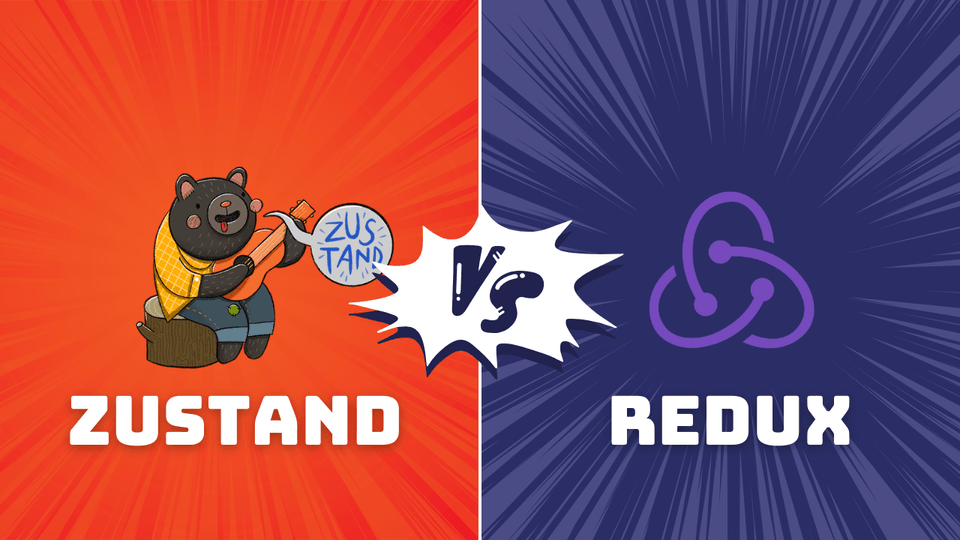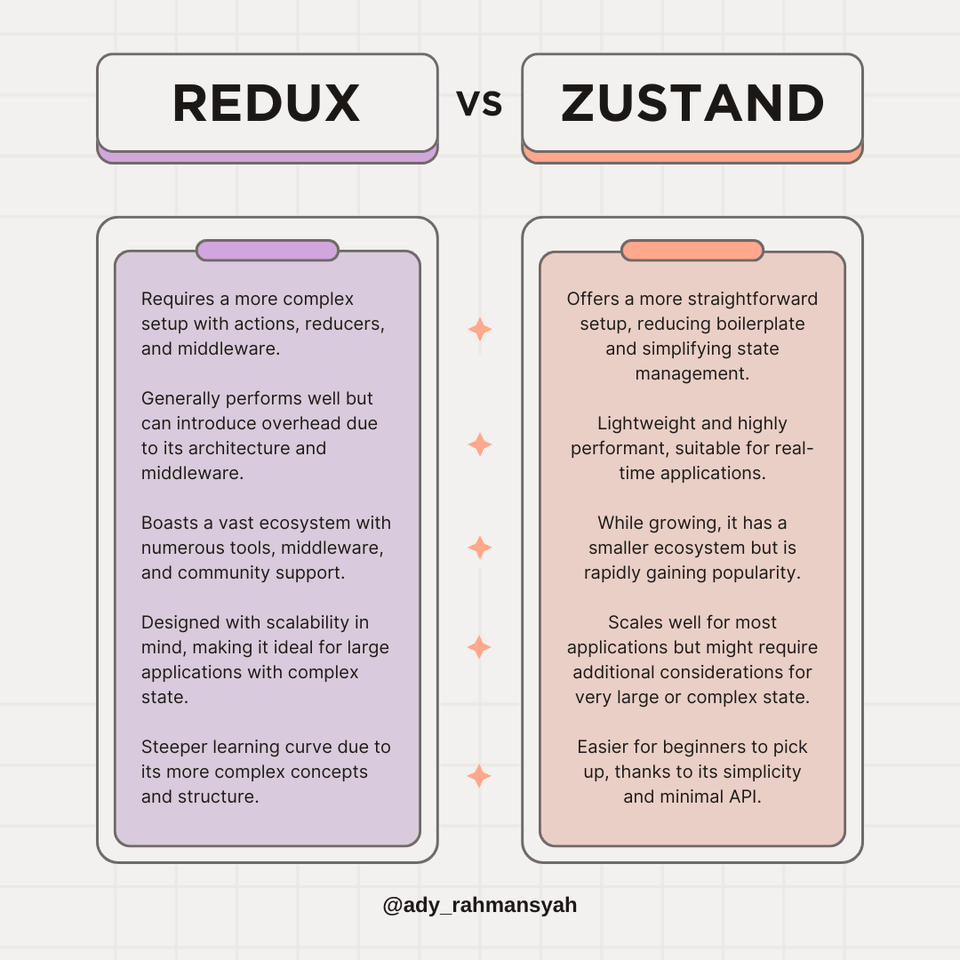Redux vs Zustand: A Battle of State Management
— Code, Redux, Zustand, Frontend, Development, State Management — 2 min read

State management is a crucial aspect of building robust and scalable React applications. With several libraries available, developers often find themselves choosing between popular options like Redux and emerging alternatives like Zustand. This blog post aims to provide a comprehensive comparison of Redux and Zustand, helping you decide which one suits your project needs best.
Redux: The Structured Giant
Redux has been a stalwart in the React ecosystem for years. It's renowned for its predictable, unidirectional data flow architecture. Key components of Redux include:
- Centralized Store: All application state resides in a single object.
- Actions: Plain objects describing changes to the state.
- Reducers: Pure functions that determine the new state based on the current state and an action.
Pros of Redux:
- Predictability: The strict data flow makes debugging and understanding state changes easier.
- Scalability: Handles complex state management in large-scale applications.
- Mature Ecosystem: A vast community and abundant resources.
Cons of Redux:
- Boilerplate: Can be verbose and requires more setup.
- Learning Curve: Steeper learning curve compared to Zustand.
- Performance Overhead: Might introduce performance overhead in smaller applications.
Zustand: The Lightweight Contender
Zustand offers a more minimalist approach to state management. It leverages React's Context API and hooks to create a simpler, performant solution. Key features of Zustand:
- Simple API: Minimal setup and easy to use.
- Fine-grained State Management: Share state selectively.
- Performance: Optimized for performance through lazy evaluation and selective subscriptions.
Pros of Zustand:
- Easy to Learn: Simple API and minimal setup.
- Performance: Often outperforms Redux in smaller applications.
- Flexibility: Adaptable to different project structures.
Cons of Zustand:
- Less Structure: Less rigid than Redux, which might lead to issues in large-scale projects.
- Smaller Ecosystem: Fewer community resources and tools compared to Redux.
Comparing Redux and Zustand

When to Choose Redux
- When working on a large-scale application with complex state management needs.
- When you require a predictable state container with a robust ecosystem.
- When you need advanced middleware for handling side effects, like Redux Thunk or Redux Saga.
When to Choose Zustand
- When you want a lightweight and easy-to-use state management solution.
- When working on smaller projects or prototypes where simplicity is key.
- When performance is a critical concern, and you need a minimal overhead state management library.
Conclusion
Both Redux and Zustand have their unique strengths and are suitable for different scenarios. Redux remains a go-to solution for large, complex applications requiring robust state management. On the other hand, Zustand offers a simpler, more efficient alternative for those looking to minimize boilerplate and enhance performance. Understanding your project requirements and evaluating these factors will help you make an informed decision on the right state management library for your React application.